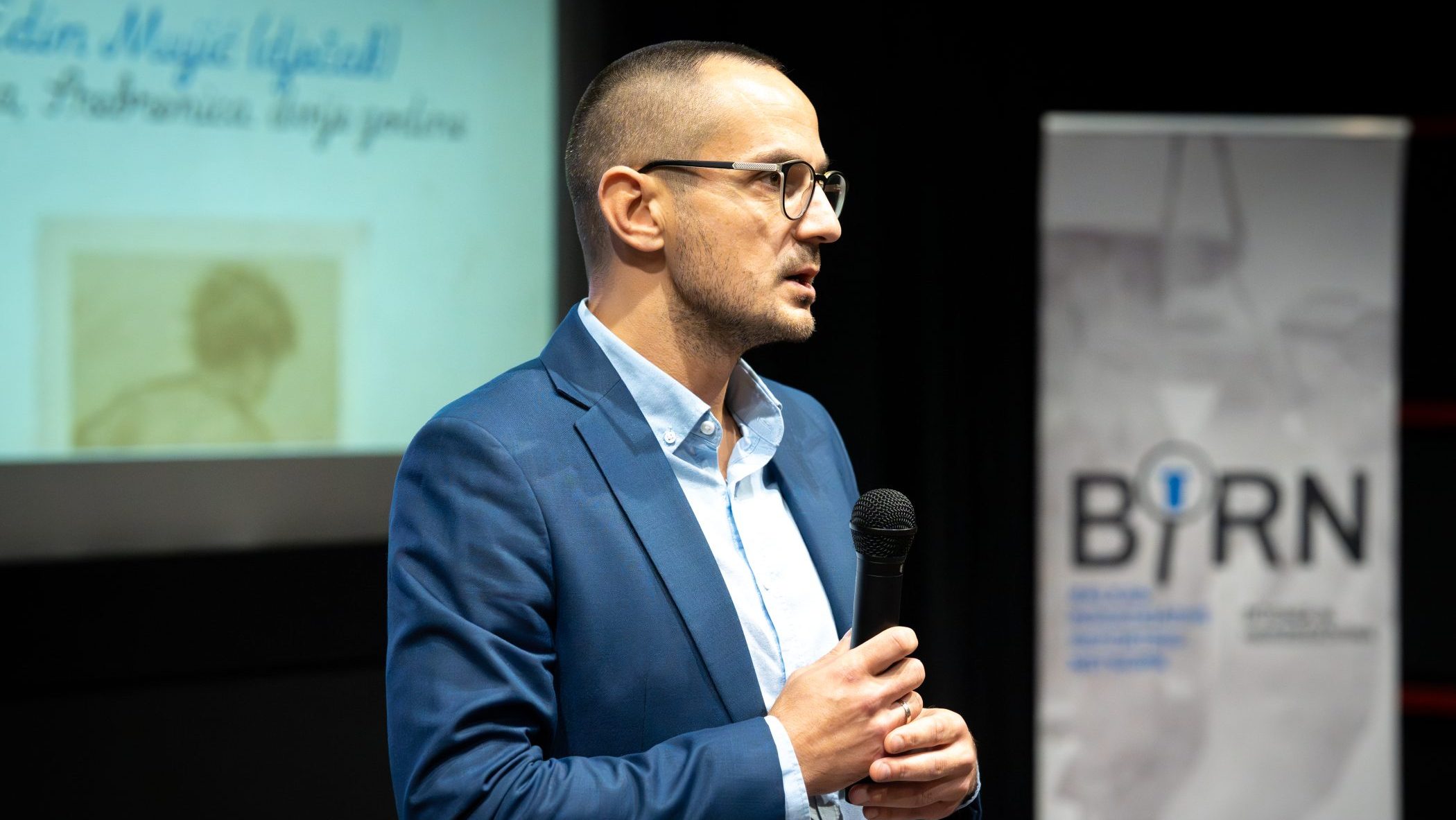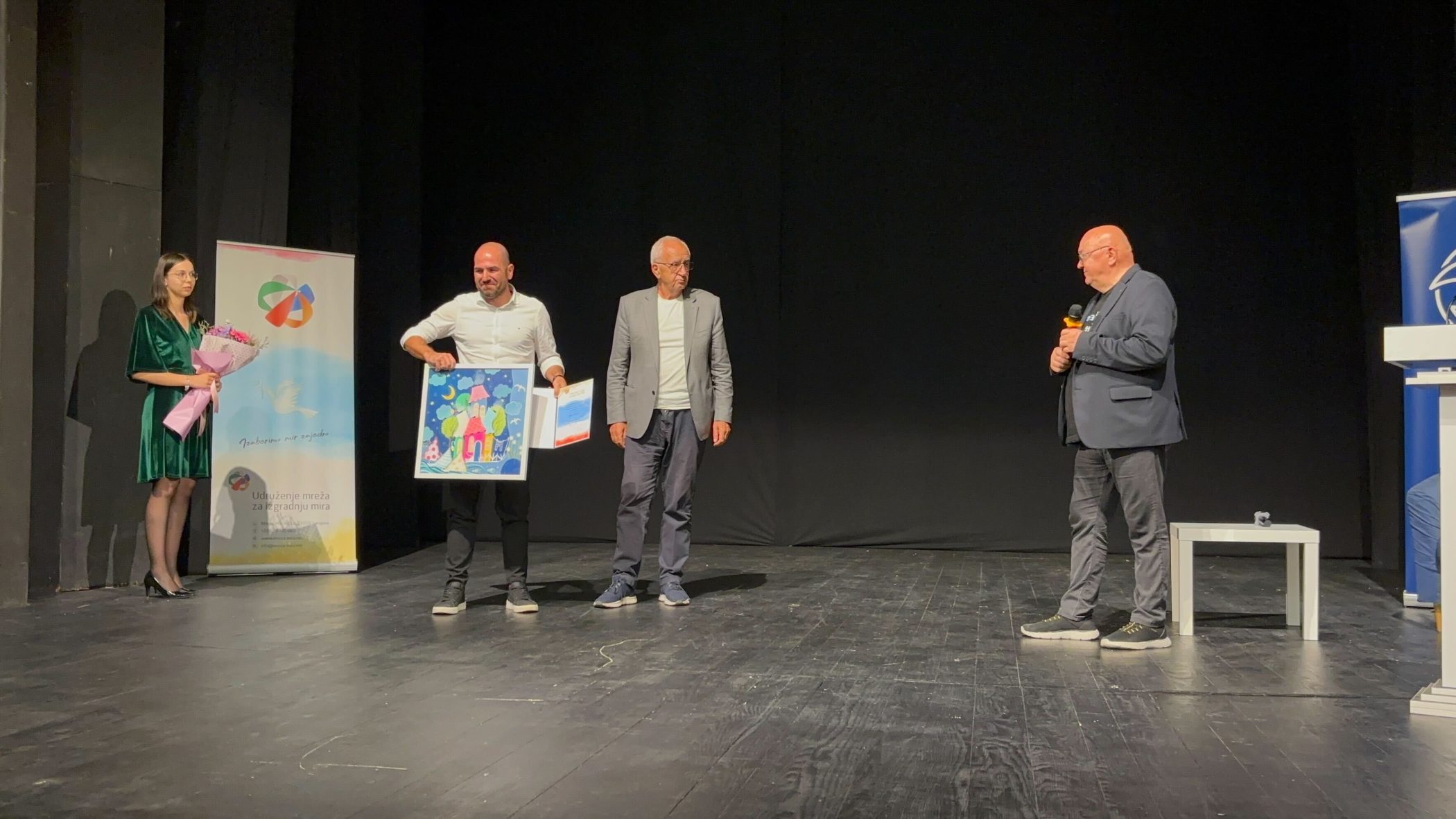This post is also available in: Bosnian
The identity and personal information about a protected witness in the trial of four Bosnian Serbs charged with war crimes committed in Prijedor have been revealed several times during the hearing held on 17 July.
All sides in the process, in error, revealed different details about protected witness K042 who was a camp inmate in Omarska near Prijedor during the war.
“There is no way back,” the presiding judge Saban Maksumic said after being informed over the phone by his associates that the public could see the witness’ first and last name on a projector when he was presented with some documents and asked to identify them.
The documents were placed on projector during defence examination at the request of the judge.
During the same hearing, Prosecutor Peter Kidd mentioned the country of origin of these documents, thus revealing the location in which this witness gave his statements.
During cross examination, the defence attorney Ranko Dakic also led the witness to reveal where he lived and worked before the war and details about his family.
The Prosecution failed to react in time to prevent the data from being revealed.
Witness K042 testified at the trial of Zeljko Mejakic, Momcilo Gruban, Dusan Fustar and Dusko Knezevic and spoke about their participation in the crimes committed in Omarska detention camp where the witness was detained during 1992.
The prosecution is trying to prove that the four indictees participated, during 1992, in maltreatment, beating, rape and murder of forcibly detained Bosniaks and Croats in the Omarska and Keraterm camps.
Protected witness K042 was brought to Omarska on 30 May 1992 following a “mass arrest”.
“They gave an order that all men aged 17 to 70 should stand on one side, and women, children and the elderly on the opposite side. We were then transported by buses to Omarska,” the witness recalled.
According to this witness and the indictment, Dusan Knezevic – also known as Duca – used to visit Omarska detention camp and participate in beating up of detainees during 1992.
“Duca came to the detention camp with his group very often, but he was not a guard. He would first come to ‘Bijela kuca’ where he would beat the detainees. He would come out sweating. Later on, he would go back and shoot at survivors,” says the witness, who claims to have known Knezevic before the war.
“Dusan was thicker and shorter than me. He had black hair and whiskers and had 37 or 38 years at the time. He had a truck before the war,” said the witness.
He was unable to recognise Knezevic in the courtroom.
The witness claims that he frequently saw a yellow truck in Omarska, which was used to remove the killed detainees from ‘Bijela kuca’.
“Two days after my arrival, the little truck, ‘zuco’, came to the camp loaded with a machine gun and a lot of ammunition. Later on the machine gun was placed on the roof of the administrative building and turned towards us when we were at the runway. Later on, I saw this truck driving away the killed detainees. I know that Vlado Kobas drove it and the bodies were loaded by the guards, who would throw them as wooden sticks onto the truck,” the witness said.
The witness has also pointed out that he saw Mejakic in Omarska. He claims that Mejakic was the commander of the camp.
“While Kvocka was in the detention camp, he told us that he was the commander and that Mejakic was his deputy. After Kvocka’s departure we knew that Mejakic became a commander since he was in charge of disposing of guards,” said the witness, who was transferred from Omarska detention camp to Trnopolje detention camp at the end of July 1992 and was then released.
In February 2005 the International Criminal Tribunal for the former Yugoslavia (ICTY) sentenced Miroslav Kvocka to seven years imprisonment for crimes committed in Omarska and Keraterm detention camps.
The trial continues on 21 August 2007, when the Trial Chamber will pronounce its decision concerning the motion of the Prosecution to include the facts determined before the ICTY in material evidence.

